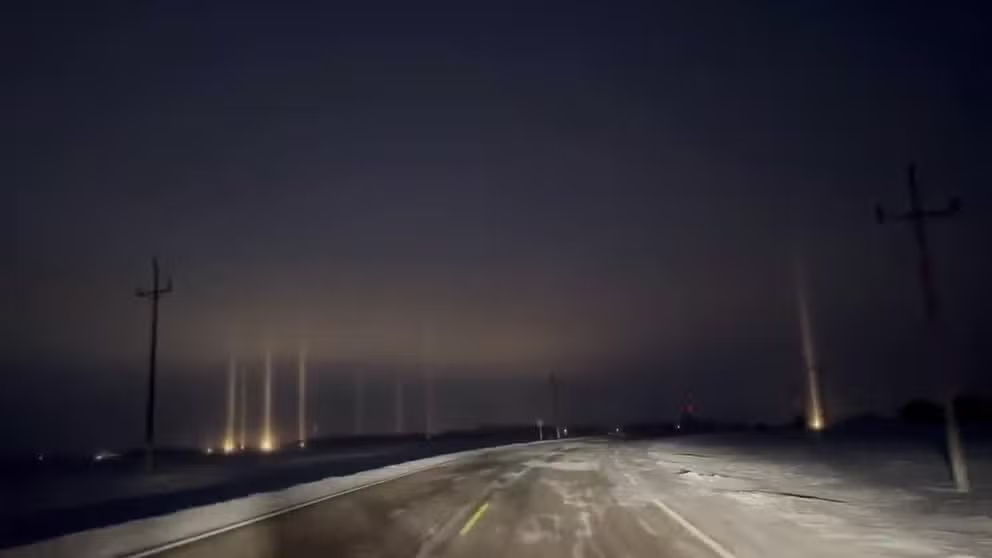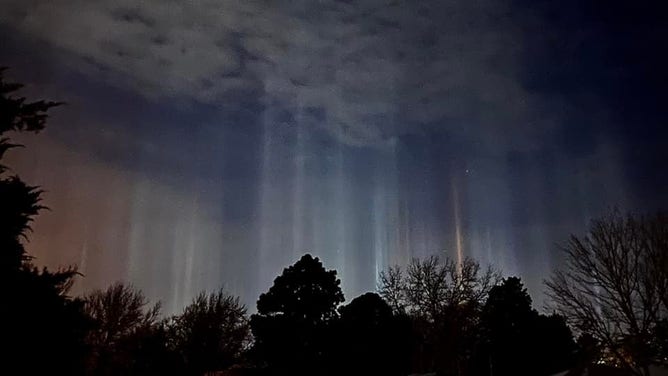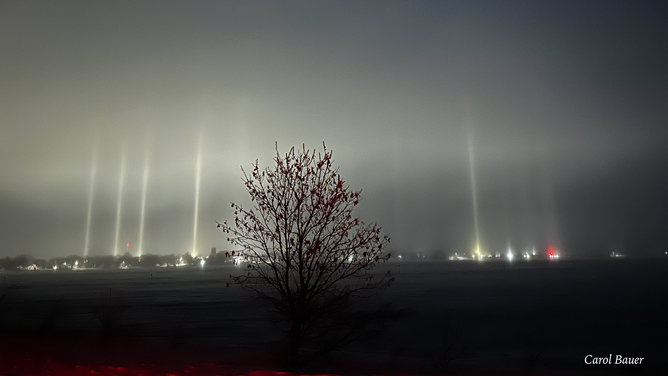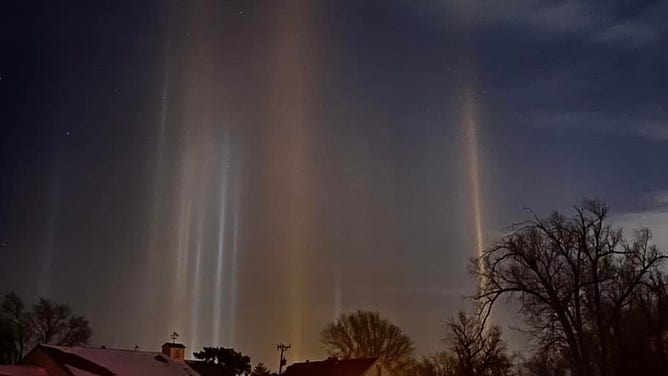Mesmerizing 'light pillars' illuminate the night sky in Minnesota
Light pillars are created when lights on the Earth's surface reflect off six-sided ice crystals in the frozen clouds above.
Watch: Light pillars illuminate night sky in Minnesota
Ice crystals in the clouds over Graceville, Minnesota, sent vertical beams of light high into the sky early Thursday morning, showcasing a phenomenon known as light pillars.
GRACEVILLE, Minn. – A phenomenon known as "light pillars" illuminated the night sky above Graceville, Minnesota, and put on a spectacular show early Thursday morning.
Carol Bauer captured the serene sight and posted videos and photos of the dazzling show on Twitter.
What are 'light pillars'?
Light pillars are created when lights on the Earth's surface reflect off six-sided ice crystals in the frozen clouds above.
"So it's kind of like a dinner plate," said Michael Kavulich, of the National Center for Atmospheric Research. "And if there are very calm conditions, they'll settle in a horizontal orientation, and they can essentially act like mirrors."
The lights will bounce off each ice crystal, creating a dazzling display above.
"When you see light pillars at night, that's due to actually lights at ground level reflecting off these horizontal kinds of (ice) mirror crystals," Kavulich said.
ICE CRYSTALS MAKE FOR SURREAL DISPLAY OF LIGHT PILLARS
What are 'sun pillars'?
Light pillars don't just occur at night, however.
There have been plenty of sun pillars reported, too.
Sun pillars are formed the same way ice pillars are created.
They can occur at sunrise or sunset when the sunlight passes through a layer of flat ice crystals in the clouds.
"Imagine thousands of little mirrors in between you and the sun, and they're all facing horizontally at different heights," Kavulich said. "So just a tiny little image of the sun is being reflected off of each one of these tiny mirrors, and it ends up forming this horizontal column that we call a pillar."
Kavulich said calmer conditions found in lower altitudes are crucial to aligning the crystals.
According to the Atmospheric Optics site, pillars from artificial light can stretch taller than natural light pillars because the "rays from the lights are not parallel and plate crystals with small tilts can still reflect (the light) downwards."
The crystals have to be about halfway between you and the light source for the pillar to form. The Optics site says if it's a freezing night and ice crystals surround you, even lights nearby, like streetlights, can give off pillars.




